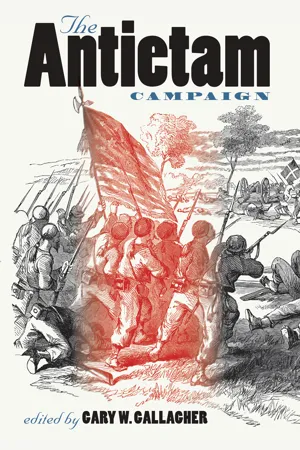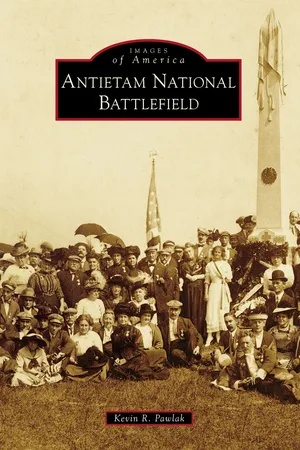History
Antietam
Antietam was a significant battle fought during the American Civil War on September 17, 1862, near Sharpsburg, Maryland. It was the bloodiest single-day battle in American history, with over 23,000 casualties. The Union victory at Antietam provided President Abraham Lincoln with the opportunity to issue the Emancipation Proclamation, which changed the nature of the war by making it a fight for freedom as well as preservation of the Union.
Written by Perlego with AI-assistance
Related key terms
Related key terms
1 of 4
Related key terms
1 of 3
6 Key excerpts on "Antietam"
- eBook - ePub
- Thomas Nelson, William C. Davis, Brian Pohanka, Don Troiani(Authors)
- 1997(Publication Date)
- Thomas Nelson(Publisher)
AntietamºNarrow, MEANDERING ANTIE–TAM Creek will forever stand out in American history for loss of life. It was the bloodiest single day in American history with casualties of more than twenty-four thou–sand men killed, wounded, or captured. The number of casualties at Antietam exceeded the total of American dead in the country’s three earlier wars—the Revolution, the War of 1812, and the Mexican War.• • This staggering loss of life was graphically illustrated for the country• • because photographers immortalized the scenes of twisted Confederate dead along the Hagerstown Pike and in the Sunken Road. They captured the brutality of warfare and displayed it to Americans who had never before seen such sights. •JIRWCDGWGBecause it was a significant battle fought in Maryland, a border state, rather than in Virginia, Louisiana, or Ten–nessee, Northerners seemed to pay much more attention to Antietam. The eyewitness accounts of what their men saw was sobering. “I hope that I may never see such a sight again. The dead were thicker here than I had seen them anywhere else,” was how Union Lt. Tully McCrea described the horror of the battle.As the epic engagement was concluding, a reporter for the New York Times submitted this account: “The com–bined forces of the enemy, under Jackson, Lee, Longstreet and the whole Rebel set, have made a stand near Sharps–burg, and all day long, from five o’clock in the morning until now—8 o’clock p.m.—have been contesting with the Union Army under McClellan. Nothing, I’m sure, can compare with this day’s fight. Neither in its colossal proportions nor in the bloody character of the struggle. Many a poor fellow will lie in the cold, damp earth tonight and pray for death to relieve him of his sufferings.” Henry Kyd Douglas, a member of Stonewall Jackson’s staff, observed: “It was a fearful day. One I am not likely ever to forget. Mars was striking iron fire. Time moving with leaden heels.”WCDWilliam Cc. Davis GWGGary W. Gallagher - eBook - ePub
The Greatest Brigade
How the Irish Brigade Cleared the Way to Victory in the American Civil War
- Thomas J. Craughwell(Author)
- 2011(Publication Date)
- Fair Winds Press(Publisher)
After Buckingham and Burnside left, McClellan returned to his letter. “Of course I was much surprised,” he wrote, “but as I read the order in the presence of Gen. Buckingham I am sure that not the slightest expression of feeling was visible on my face, which he watched closely. They shall not have that triumph. They have made a great mistake. Alas for my poor country! . . . Our consolation must be that we have tried to do what was right; if we have failed it was not our fault.”A MORAL CRUSADEAntietam was the bloodiest single-day battle of the Civil War and the deadliest day in American military history. On D-Day 1944, the United States lost about 6,600 men, but at Antietam the combined losses of the North and the South were approximately 22,720 killed, wounded, or missing. As for the 1,000 men of the Irish Brigade, they suffered 540 casualties, almost all of these at the Sunken Road. The day before the Irish went into battle, 120 new recruits had arrived; 75 of these newcomers were killed or wounded at Antietam.At the Sunken Road, the Irish Brigade accomplished what two previous Union brigades had failed to do—withstand the Confederates’ fire, ultimately drive them from the trench, and give possession of the center of the battlefield to the Army of the Potomac. The Irish Brigade turned the tide at Antietam. By driving off the Confederates, it all but ensured a Union victory. The Irish had been building a reputation as tenacious fighters; at Antietam they cinched it.And the victory the Irish helped win resonated in unexpected ways for the rest of the war. Lincoln needed success on the battlefield so he could publish his Emancipation Proclamation from a position of strength. The Proclamation destroyed any hope the Confederacy had of gaining international recognition and support. The war was now as much a fight for freedom as to restore the Union, and Great Britain, which had been an enemy of slavery for decades, and France would not send their troops to preserve slavery. Lincoln had shifted the emphasis of the war from a constitutional crisis over secession to a moral crusade for human freedom. - eBook - ePub
Southern Cultures: Remembering the Civil War Issue
Volume 19: Number 3 – Fall 2013 Issue
- Harry L. Watson, Jocelyn Neal, Harry L. Watson, Jocelyn Neal(Authors)
- 2013(Publication Date)
1More than 6,000 Union and Confederate soldiers died that day in the farm fields outside Sharpsburg, making it the single bloodiest day in American military history. More soldiers died that day than died in combat in all other wars fought by America in the nineteenth century combined: the War of 1812, the Mexican–American War, the Spanish–American War, and the Indian wars. Beyond the statistics was the indescribable carnage. “Words are inadequate to portray the scene,” wrote one soldier. Another, in charge of a burial party, described the dead “in every state of mutilation, sans arms, sans legs, heads, and intestines, and in greater number than on any field we have seen before.” It was said that a person could walk a mile or more atop the bodies without touching ground.2An estimated 5,000 people watched the fighting from a hill a safe distance away. Edwin Forbes of Frank Leslie’s Illustrated Newspaper reported that the battle took place on open ground and was fully visible from the hillside, which was “black with spectators.” “No battle of the war, I think, was witnessed by so many people,” he reported. It is possible the photographers Alexander Gardner and James F. Gibson were among them. The two men, employees of Mathew Brady, had been following the Union army for about two weeks, primarily photographing soldiers in their camps. When exactly they arrived at Antietam is uncertain, but they were on the field with their equipment the day after the battle; no other American battlefield had been photographed so soon after the fighting. The pair exposed seventy glass negatives within five days of the battle. Their images include landmarks of the field, hastily dug graves, and the corpses of horses and men. A union surgeon described bodies “stretched along, in one straight line, ready for interment, at least a thousand blackened bloated corpses with blood and gas protruding from every orifice, and maggots holding high carnival over their heads.”3 - General James Longstreet(Author)
- 2014(Publication Date)
- Golden Springs Publishing(Publisher)
CHAPTER XVIII. — BATTLE OF SHARPSBURG, OR Antietam.
Bloodiest Single Day of the War—Comparison of Casualties—Hooker opens the Fight against Jackson’s Centre—Many Officers among the Fallen early in the Day—McLaws and Walker in time to meet Sumner’s Advance under Sedgwick—Around Dunker Chapel—Richardson’s splendid Advance against the Confederate Centre the Signal of the bursting of another Storm—Longstreet’s and D. H. Hill’s Troops stood before it—Fall of General G. B. Anderson—General Richardson mortally wounded—Aggressive Spirit of his Command broken—Wonderful Cannon-shot—General D. H. Hill’s Third Horse killed under him.
The field that I have described—the field lying along the Antietam and including in its scope the little town of Sharpsburg—was destined to pass into history as the scene of the bloodiest single day of fighting of the war, and that 17th of September was to become memorable as the day of greatest carnage in the campaigns between the North and South.Gettysburg was the greatest battle of the war, but it was for three days, and its total of casualties on either side, terrible as it was, should be one-third larger to make the average per diem equal to the losses at Sharpsburg. Viewed by the measure of losses, Antietam was the fourth battle of the war, Spottsylvania and the Wilderness, as well as Gettysburg, exceeding it in number of killed and wounded, but each of these dragged its tragedy through several days.- eBook - ePub
- Gary W. Gallagher(Author)
- 2012(Publication Date)
- The University of North Carolina Press(Publisher)
Generally speaking, army officers of the World War I generation found battle studies and staff rides to Civil War sites such as Antietam to be informative, inspirational, even exhilarating. During their touring, the officers maintained a brisk pace. They walked the fields on foot or rode over them on horseback. A contingent of enlisted men set up a tent camp and field kitchen. After a year spent in a relatively sedentary academic atmosphere, the students needed a way to ease themselves back to active duty in the field with troops, and school administrators purposely scheduled these rides late in the academic year to help them make that transition. Staff rides also offered an opportunity for fun, camaraderie, and, for prospective officers, a chance to observe their peers’ behavior under field conditions and away from the formalities of the classroom.The Army War College official history of the Civil War for which these Antietam studies were conducted never was completed. American entry into World War I halted the project, and financial constraints and curricular reforms in the postwar years ultimately killed it. But such official inattention did not mean that Antietam had nothing to teach modern soldiers. Military professionals still visit Antietam to reflect on the lessons offered by Lee, McClellan, and a host of other warriors in blue and gray. Moreover, even in the pre-World War I years, not all uniformed visitors belonged to the American military establishment. British army officers of that era also considered Antietam’s many important and timeless lessons. For one young British subaltern who studied this clash, two points seemed most relevant. First, “War demands the best, and Victory can be won only by assiduous and unremitting wooing”; and second, the Civil War generation “lives on still as a memory and an inspiration in the annals of their country’s story, and will live, so long at least as, through these materialistic and matter-of-fact days, heroism and self-sacrifice and devotion to duty are held in honour among men.”51 With these insightful notions of a foreign admirer American officers about to step from Antietam to the Argonne heartily concurred.NOTES
1. Capt. Isaac W. Heysinger, Antietam and the Maryland and Virginia Campaigns of 1862 - eBook - ePub
- Kevin R. Pawlak(Author)
- 2019(Publication Date)
- Arcadia Publishing(Publisher)
ThreeTHE BATTLEFIELDThousands of visitors travel to Sharpsburg every year to visit Antietam National Battlefield. The ground they tread on a daily basis looks much the same in the 21st century as it did in 1862. Historic homes, roads, fence lines, and farm fields still exist. One can walk in the footsteps of Union and Confederate soldiers from one end of the field to the other with few modern intrusions.This virtually unchanged appearance did not always exist, though. Once the armies moved on from the fields of Antietam, Sharpsburg’s citizens had to turn the area into a habitable place again. They built new homes, cut down historic trees, and planted new crops. Throughout the years, these post–Civil War homes became problematic on the battlefield landscape. A convenience store stood along the edge of the Bloody Lane while another used the foundation of the fallen Dunker Church. But the more things changed, the more things stayed the same at Antietam.A visiting delegation of North Carolina veterans in 1894 wrote back home, “The locality in the nearly thirty-two years since the battle has undergone remarkably small change. The landmarks are all there.” By the time of that visit, several monuments had already been erected on the battlefield. The monuments and the railroad increased visitation to the battlefield. This boon received praise from Sharpsburg’s citizens. “Our citizens are beginning to take a deep interest in the work of laying out this battlefield, and have it eventually pass into the hands of the government. Our town has always manifested a loyalty to the Union, and now we have an opportunity—a grand opportunity to demonstrate our patriotism and to show our deepest regard for the faith and work of the heroes now sleeping in Antietam National Cemetery,” read one local newspaper.The US War Department assumed control of the battlefield in 1890 as Antietam became one of America’s first five national military parks. In 1933, the National Park Service took charge of the park. The numerous images that appear in this chapter trace the history and preservation of Antietam National Battlefield through the years.
Index pages curate the most relevant extracts from our library of academic textbooks. They’ve been created using an in-house natural language model (NLM), each adding context and meaning to key research topics.
Explore more topic indexes
Explore more topic indexes
1 of 6
Explore more topic indexes
1 of 4
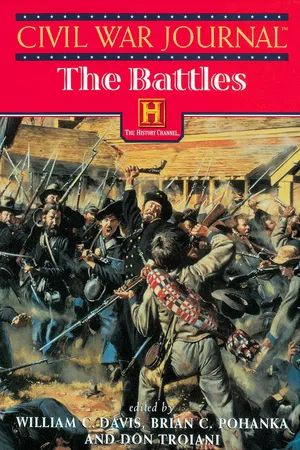
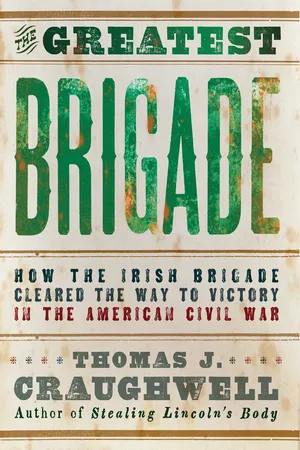
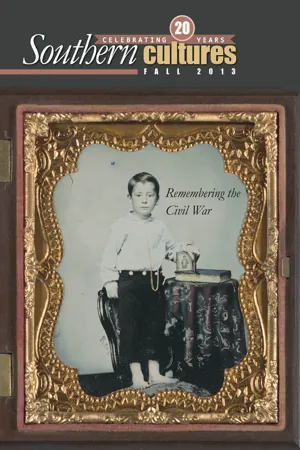
![From Manassas To Appomattox : Memoirs Of The Civil War In America [Illustrated Edition]](https://img.perlego.com/book-covers/3020435/9781782895428_300_450.webp)
